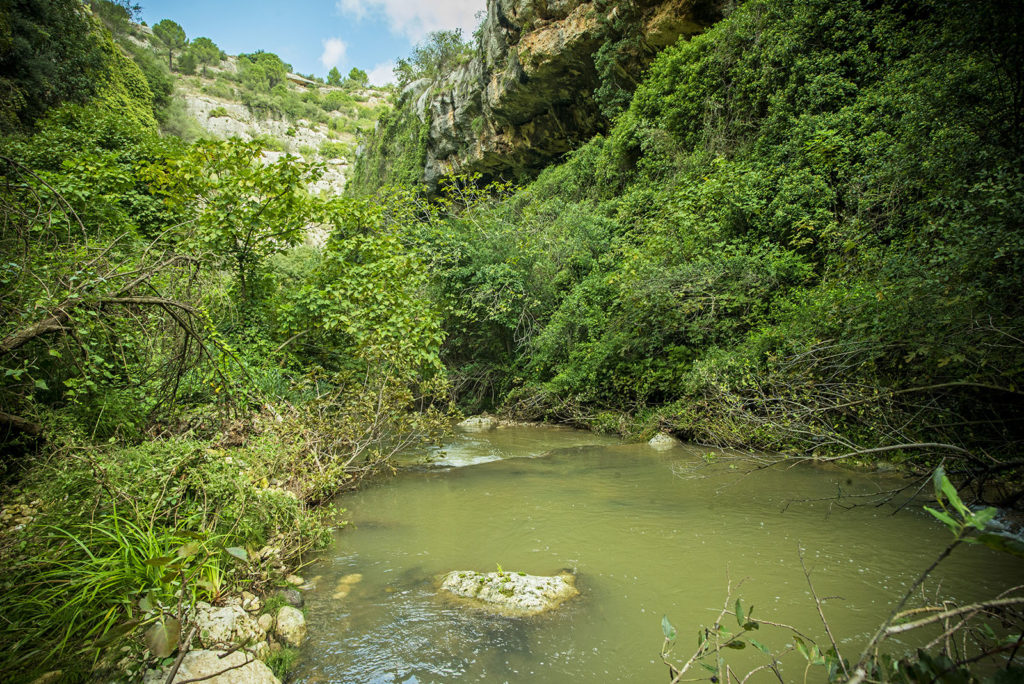The site of Pantalica stands on a plateau surrounded by large canyons.
The rock faces have been carved out over the millennia by two rivers: the Anapo and the Calcinara. The water element is therefore essential to this place, because its flow over the centuries has determined the very shape of this area.
The Anapo river begins in the territory of Buccheri. Along its route it crosses the gorges of Pantalica, descends through the plain of Syracuse and pours into the waters of the city’s Porto Grande.
 Its name means “invisible” in ancient Greek. In fact, in many places along its course this river hides underground and disappears from view.
Its name means “invisible” in ancient Greek. In fact, in many places along its course this river hides underground and disappears from view.
It is associated with the Greek myth of Anapos.
According to the myth, Persephone, daughter of Zeus and Demeter, was collecting flowers on the shores of Lake Pergusa. Suddenly, Hades arrived, who was in love with the young girl and kidnapped her. Persephone was accompanied by a group of nymphs, including Cyane, who clung to Hades’ chariot with all her might to prevent Persephone’s abduction. The angry god punished her and turned her into a spring with turquoise waters. In fact, cyanos in Greek means “turquoise”.